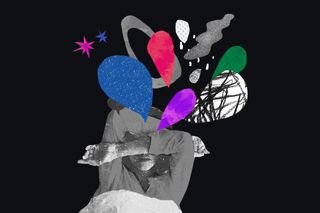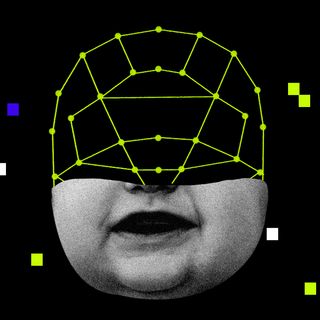
How Bad Dreams Can Be Good for Us
Bad dreams allow people to process negative emotions as they lay asleep, undisturbed — reducing emotional distress when they’re up.

“It’s said that time heals all wounds, but my research suggests that time spent in dream sleep is what heals,” Matthew Walker, a professor of neuroscience and psychology at the University of California, Berkeley, who believes dreams are like “overnight therapy” had written in 2017. A new study attests to his words.
Published in Dreaming, the study suggests that having a bad dream might mean we have an emotionally easier day ahead of us — since they play an “emotionally integrative function” for people experiencing emotional distress. Basically, if one is going through an emotionally stressful period in their life, bad dreams can help them process these intense emotions while they’re laying asleep. As a result, when they wake up, they may feel lighter emotionally.
Mostly, dreams tend to occur during the rapid eye movement (REM) cycle of sleep. The study focused on “idiopathic dreams,” which tend to occur when a person is going through a period of acute emotional distress, and typically feature fear, aggression, and death.
As Walker, who wasn’t involved in this study, explained, “REM-sleep dreaming appears to take the painful sting out of difficult, even traumatic, emotional episodes experienced during the day, offering emotional resolution when you awake the next morning… [It] is the only time when our brain is completely devoid of the anxiety-triggering molecule noradrenaline. At the same time, key emotional and memory-related structures of the brain are reactivated during REM sleep as we dream. This means that emotional memory reactivation is occurring in a brain free of a key stress chemical, which allows us to re-process upsetting memories in a safer, calmer environment.”
Related on The Swaddle:
Why Can’t We Remember Our Dreams?
A study from 2019 also reached similar conclusions. Its researchers found through a week-long experiment that among people who were trying to suppress certain emotionally disturbing thoughts, those who dreamt about it found that their perceived unpleasantness of the thought had decreased by the end of the week.
In other words, as one article puts it, “[B]ad dreams could be the mind’s way of airing out the emotional dirty laundry.”
Moreover, another 2019 study suggests that bad dreams enable us to simulate potentially deadly scenarios that we could face when we’re awake, and rehearse our responses to them. “Dreams may be considered as… real training for our future reactions and may potentially prepare us to face real-life dangers,” Lampros Perogamvros from the University of Geneva, who co-authored the study, had told BBC News.
Deirdre Barrett, a psychologist whose research focuses on dreams, hypnosis, and imagery, believes there are emotional underpinnings to bad dreams that developed to help our ancestors practice their reactions to common life-threatening situations — like being attacked by a wild animal. But, according to her, bad dreams don’t serve a useful function anymore in the modern world we live in. “In ancestral days, a trauma that happened was by its nature something that easily could happen again. Having the recurring nightmare of that trauma helped keep you on guard. In today’s society, that’s not the case, but we still have that instinctive mechanism.” That might be subjective, though.
Related on The Swaddle:
Why ‘Sleep on It’ Is Good Advice For Stressful Situations
Granted, the likelihood of being chased by a lion down a city road is quite low — although, with urbanization destroying the habitats of wild animals, that may not hold true for very long. But that doesn’t mean we live in a world free of physical — or even socio-economic — dangers. According to John Allan Hobson, who was a psychiatrist and dream researcher, life continues to present precarious scenarios even in the 21st century, and it’s bad dreams that enable us to better our potential fight-or-flight responses to them.
However, it doesn’t mean that no matter how terrified one is, it’s all meant to salvage their mental health ultimately. “No pain, no gain” — and especially, “more pain, more gain” — doesn’t apply here. As Perogamvros had noted, “If a certain threshold of fear is exceeded in a dream, it loses its beneficial role as an emotional regulator.” Night terrors, sleep paralysis, and other disordered forms of dreaming, could be examples of where they don’t help, and can actively harm us.
But when it comes to garden-variety bad dreams, uncomfortable as they may seem, they also help people consolidate and store memories — besides ensuring that our waking selves are less burdened emotionally, and are ready with their responses to emergencies.
As Barrett reminds us, “Just like interesting, positive dreams can help us understand more about ourselves and have metaphoric meanings to us, garden-variety nightmares can do the same.”
Devrupa Rakshit is an Associate Editor at The Swaddle. She is a lawyer by education, a poet by accident, a painter by shaukh, and autistic by birth. You can find her on Instagram @devruparakshit.
Related


Gender Bias in Search Algorithms Shapes Hiring Choices, People’s Beliefs: Study
